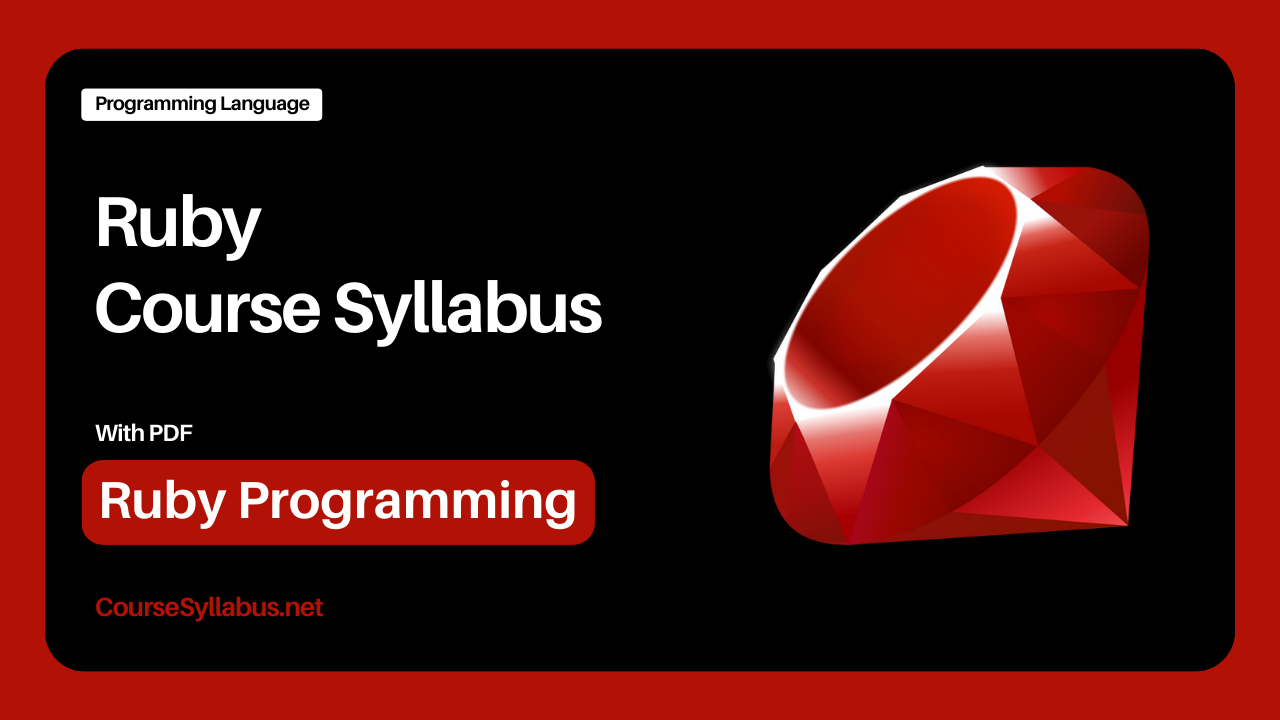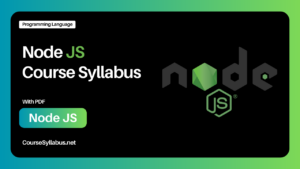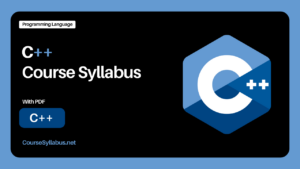Ruby is a dynamic, reflective, object-oriented programming language known for its simplicity and productivity. Developed in the mid-1990s by Yukihiro Matsumoto, or “Matz,” Ruby was designed with a focus on programmer happiness and productivity. It combines elements from several programming languages, including Perl, Smalltalk, Eiffel, and Lisp, to create a language that is both elegant and powerful.
Ruby Programming Course Syllabus
Module 1: Introduction to Ruby
- History and Overview of Ruby
- Installing Ruby and Setting up Development Environment
- Hello World: Your First Ruby Program
- Ruby Syntax and Basic Data Types
- Variables and Constants
- Operators and Expressions
- Control Structures: Conditionals and Loops
Module 2: Object-Oriented Programming in Ruby
- Understanding Object-Oriented Programming (OOP) Concepts
- Classes and Objects in Ruby
- Constructors and Instance Methods
- Inheritance and Method Overriding
- Access Control: Public, Private, and Protected
- Modules and Mixins
- Polymorphism and Duck Typing
Module 3: Collections and Data Structures
- Arrays and Hashes
- Enumerables and Iterators
- Ranges and Sets
- Working with Collections: Filtering, Mapping, and Reducing
- Nested Data Structures
Module 4: File I/O and Error Handling
- Reading and Writing Files in Ruby
- File Handling Techniques: File Modes, Paths, and Directories
- Exception Handling in Ruby: try-catch blocks, rescue, and ensure
- Custom Exceptions and Error Classes
Module 5: Ruby Gems and Libraries
- Introduction to RubyGems
- Installing and Managing Gems
- Popular Ruby Libraries and Frameworks (e.g., Rails, Sinatra)
- Exploring Useful Gems for Common Tasks (e.g., testing, database interaction)
Module 6: Metaprogramming and Reflection
- Understanding Metaprogramming Concepts
- Dynamic Method Definition and Method Missing
- Reflection and Introspection in Ruby
- Leveraging Metaprogramming for Code Generation and DSLs (Domain-Specific Languages)
Module 7: Concurrency and Multithreading
- Introduction to Concurrency in Ruby
- Threads and Thread Synchronization
- Fibers and Concurrency Control
- Using Actors for Concurrent Programming
Module 8: Web Development with Ruby on Rails (Optional)
- Introduction to Ruby on Rails Framework
- Model-View-Controller (MVC) Architecture
- Creating Models, Views, and Controllers in Rails
- Routing and RESTful APIs
- Working with Databases: ActiveRecord and Migrations
Module 9: Testing and Debugging
- Writing Tests with RSpec and MiniTest
- Test-Driven Development (TDD) Practices
- Debugging Techniques and Tools in Ruby
- Profiling and Performance Optimization
Module 10: Project
- Capstone Project: Apply learned concepts in a real-world scenario
- Design and Develop a Ruby application from scratch
- Implementation, Testing, and Documentation
Ruby Programming Key Point & Feature
- Simplicity: Ruby’s clean syntax emphasizes simplicity and expressiveness, enabling developers to focus on problem-solving rather than complex syntax.
- Object-Oriented: Ruby is fully object-oriented, supporting principles like encapsulation, inheritance, and polymorphism for building modular and reusable code.
- Dynamic Typing: With dynamic typing, variable types are determined at runtime, offering flexibility in coding but requiring careful testing and error handling.
- Metaprogramming: Ruby’s support for metaprogramming allows for dynamic modification and extension of code at runtime, facilitating the creation of domain-specific languages and elegant solutions.
- Rich Standard Library: Ruby boasts a rich standard library covering various tasks such as file I/O, networking, and string manipulation, supplemented by RubyGems for easy management of third-party libraries.
- Rails Framework: Ruby on Rails (Rails) is a powerful web application framework that follows the convention over configuration (CoC) and don’t repeat yourself (DRY) principles, enabling rapid development of scalable and maintainable web applications.
Ruby Learning Resources
There are many resources available for learning Ruby Programming, ranging from online tutorials and courses to books and interactive platforms. Here are some popular options:
Ruby Developer Career Opportunities
Web Development: Create robust web applications and APIs using Ruby on Rails.
Full-Stack Development: Utilize Ruby’s power alongside front-end technologies for comprehensive web solutions.
Mobile Development: Craft native iOS and Android apps efficiently with RubyMotion.
Software Engineering: Engineer desktop applications, utilities, and system tools with Ruby’s flexibility.
DevOps and Automation: Streamline deployment and infrastructure management through Ruby-based automation tools.
Freelancing and Consulting: Provide specialized services on projects or troubleshoot and optimize existing systems.
Startups and Entrepreneurship: Harness Ruby’s rapid development capabilities to launch innovative ventures.
Education and Training: Share knowledge by teaching Ruby programming or developing educational content.
Open Source Contribution: Enhance skills and reputation by actively contributing to Ruby projects.
Conclusion:
In conclusion, Ruby developers have a plethora of opportunities across various sectors. With its versatility and robust framework like Ruby on Rails, developers can thrive in web development, mobile apps, software engineering, and beyond. Whether it’s freelancing, entrepreneurship, or contributing to open source, Ruby offers a vibrant ecosystem for growth and innovation in the tech industry.




